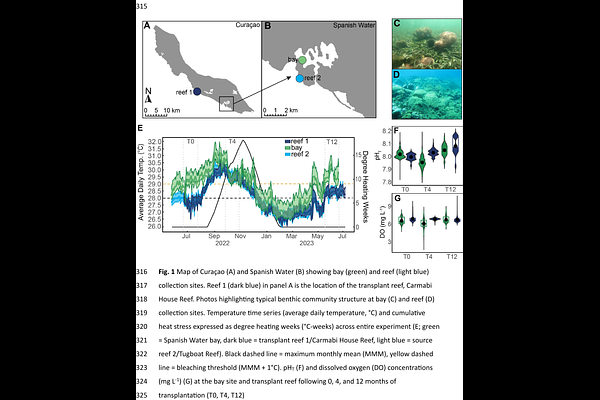Physiological mechanisms underlying coral acclimatization capacity to novel, multi-stressor conditions

Physiological mechanisms underlying coral acclimatization capacity to novel, multi-stressor conditions
Solomon, S. L.; Lippens, C. R.; Mazza, R.; Powell, M. E.; Johnson, K. W.; Suvacarov, S.; Van der Zande, R. M.; Schoepf, V.
AbstractReef-building corals are under pressure to acclimatize and/or adapt to multiple co-occurring stressors, including climate change and declines in water quality. However, their capacity to do so is largely unknown. Yet, some corals naturally persist in habitats with multi-stressor conditions which can provide crucial insight into coral adaptive capacity under future ocean conditions. To assess the role of phenotypic plasticity and local adaptation in coral acclimatory responses to novel conditions, we reciprocally transplanted two coral species (Siderastrea siderea, branching Porites) between a multi-stressor, highly variable inland bay and a more stable fringing reef, and measured key phenotypic traits after 0, 4, and 12 months. Reef-origin corals demonstrated high plasticity when transplanted to the bay, as both species maintained high survival and calcification, and matched bay natives' phenotypic traits. Yet, both species had reduced photosynthesis-to-respiration ratios, highlighting the risk of metabolic tradeoffs unless compensated for through increased heterotrophy. Conversely, bay-origin corals had enhanced photosynthetic performance but lower calcification on the reef. Reaction norms provided stronger evidence for environmental specialization in bay-origin than reef-origin corals, which could limit their use as stress-tolerant source corals for reef restoration. Overall, our findings suggest multi-stressor variability may promote specialized genotypes, rather than increased phenotypic plasticity.